Sarah, Lady Crease 1907
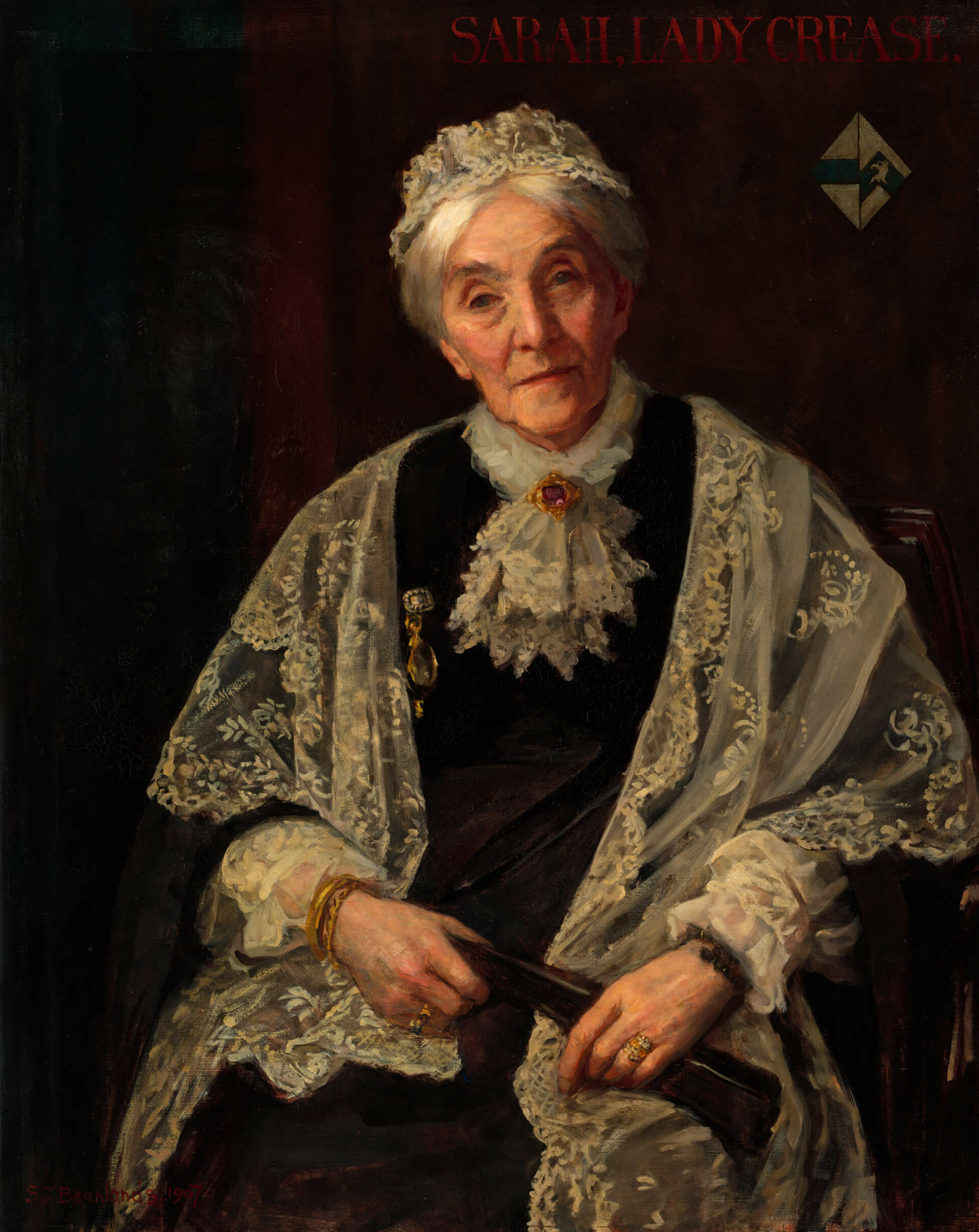
Sophie Pemberton, Sarah, Lady Crease, 1907
Oil on canvas, 92.8 x 73.4 cm
Royal BC Museum, Victoria
In this life-size portrait, Sarah Crease is every bit the matriarch. She wears a fine lace shawl, cuffs, and scarf to brighten her black silk gown as well as the inherited gold rings, bracelets, and brooches that reflect her status. Pemberton knew Lady Crease—whose daughters sometimes sketched with her—and this acquaintance enabled her to draw on personal knowledge as she worked. She painted Crease’s face in half light, her head slightly cocked to the side, with an engaged yet relaxed expression. The flesh tones of her ruddy cheeks and blue-veined hands suggest health and vigour in a woman who, at sixty-nine, had lived an eventful life.
In the years Pemberton spent in England and France after 1889, she gradually moved away from the academic realism that characterized her earlier portraits. Here she employs visible brush strokes, as she had in her European landscapes, yet she takes particular care to render the facial features clearly as she strives to convey her subject’s strong personality.
Lady Crease, a socially prominent Victoria widow, was an early pioneer in British Columbia, a talented amateur artist, and a supporter of women’s rights and the arts. The previous year she had commissioned Pemberton to paint a posthumous portrait of her husband, and she wanted to create a matching pair. These and other commissions indicate that Pemberton was considered a professional artist by the prominent clientele who sought her out, especially after she was inducted as an associate into the Royal Canadian Academy of Arts in 1906.
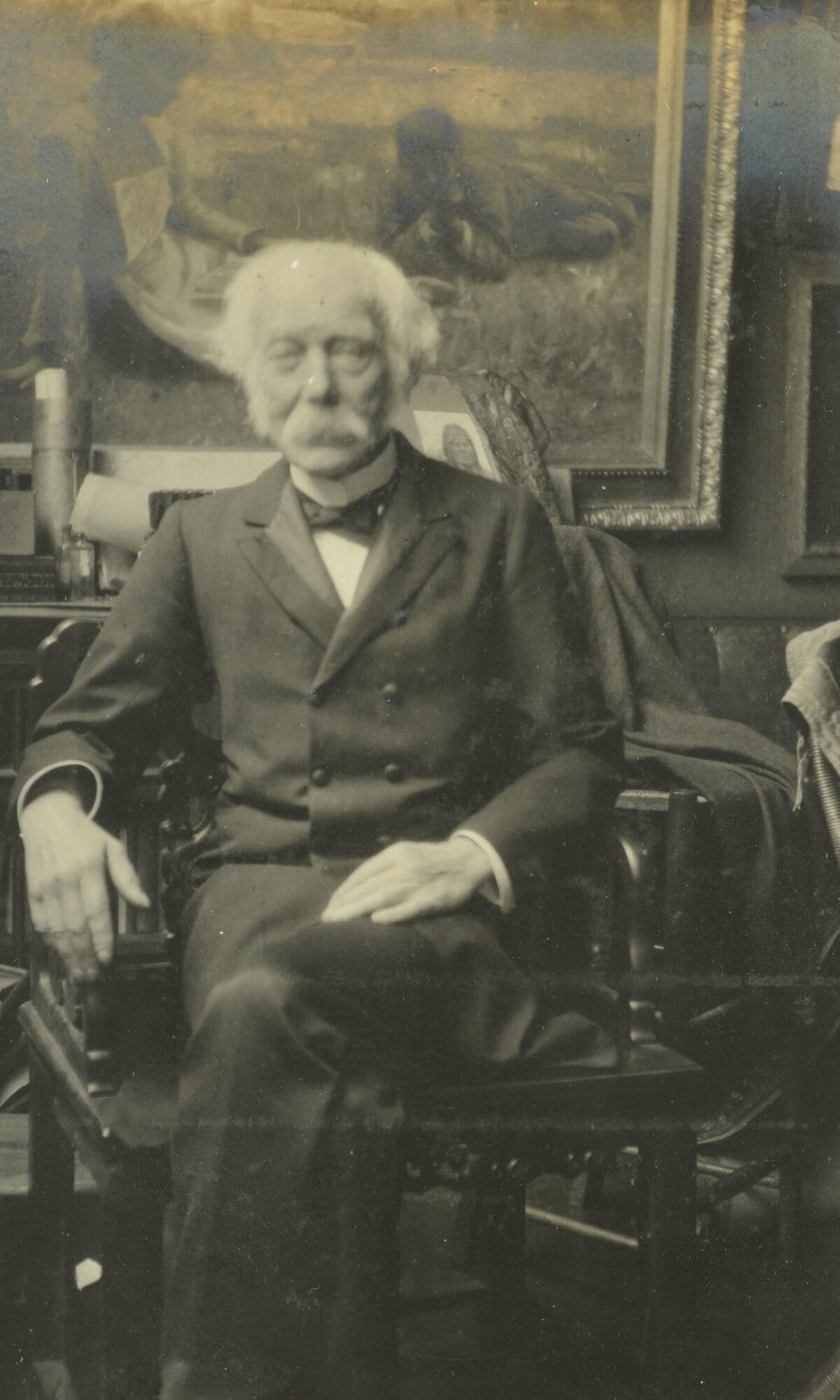
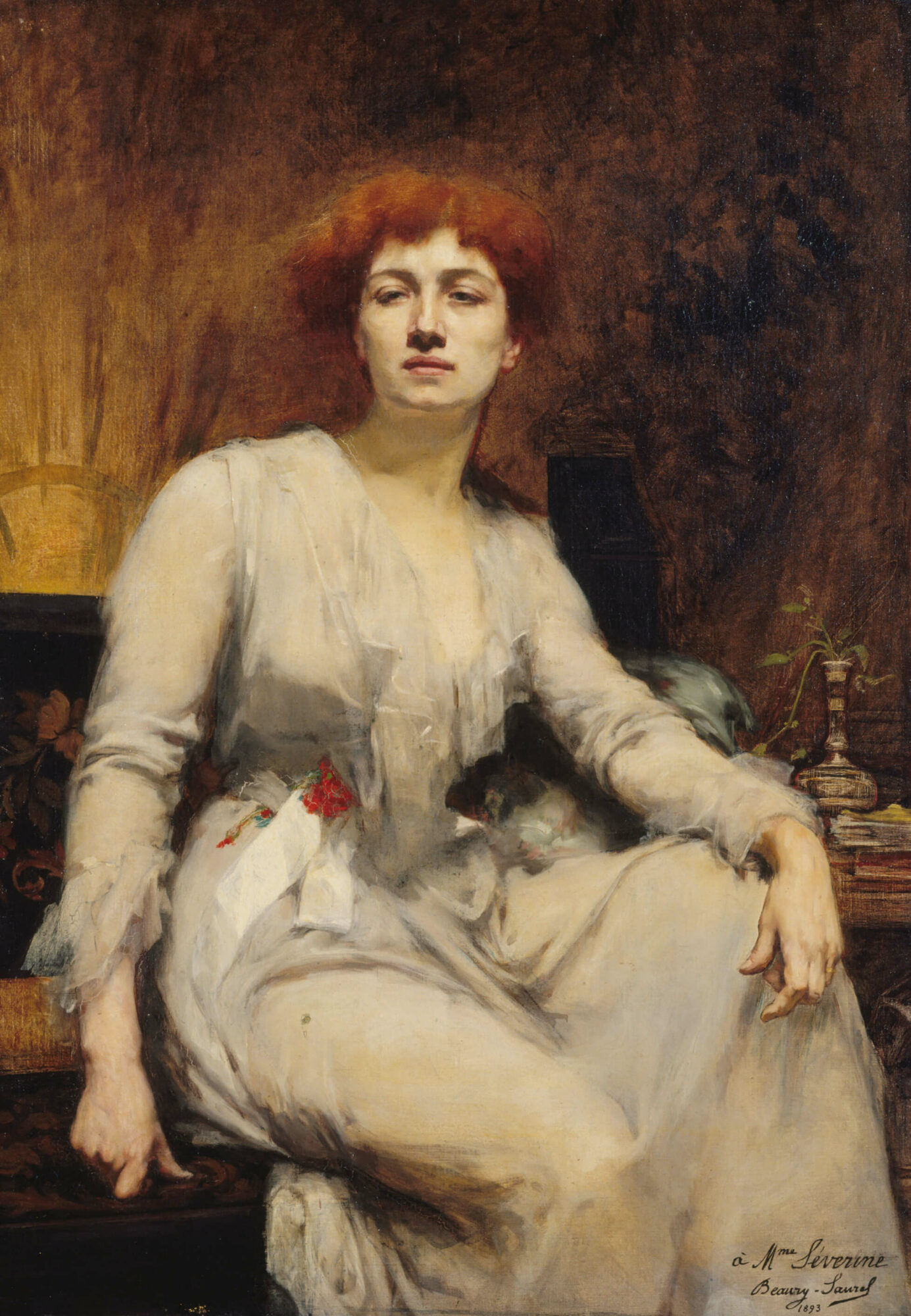
The fact that Pemberton undertook several commissions after her marriage to Canon Arthur Beanlands signalled that she still considered herself a professional artist and prioritized her work, even as she adjusted to her role as a wife and stepmother. This image was probably Pemberton’s last portrait commission in Victoria. She developed a serious medical issue early the following year, and, once restored, she focused on preparing landscapes that celebrated the diversity and beauty of Vancouver Island for an exhibition she was planning in London in 1909 at the prestigious Doré Gallery. The paintings she completed after her marriage, including this portrait, bore her new surname, Beanlands. While Victorians accepted such a change, when she moved to England permanently in 1908, the different surname complicated her artistic identity and adversely affected her career.
To avoid similar confusion, Pemberton’s friend Amélie Beaury-Saurel (1849–1924), an accomplished and somewhat controversial artist before her marriage, had kept her name after marrying Rodolphe Julian, founder of the Paris art school. In her portrait of Séverine, Beaury-Saurel captures the confident downward gaze of a trailblazing French journalist and feminist who wears a red flower pinned to her sash—a symbol of socialism.

 About the Author
About the Author
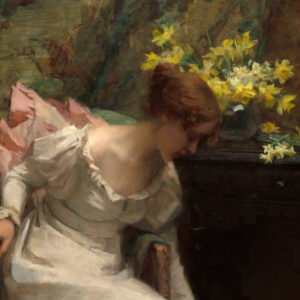 More Online Art Books
More Online Art Books
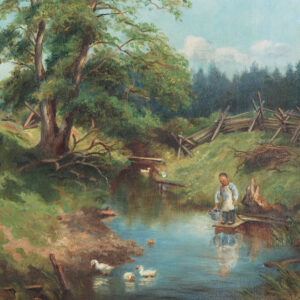 Acknowledgements
Acknowledgements